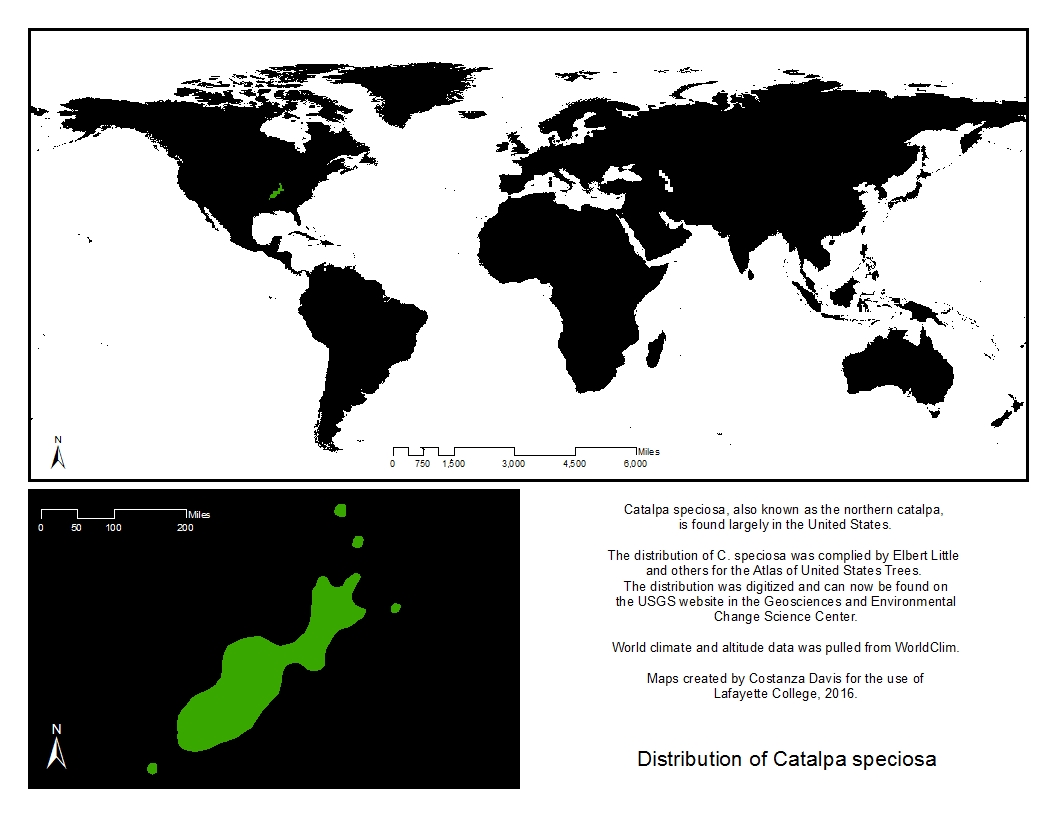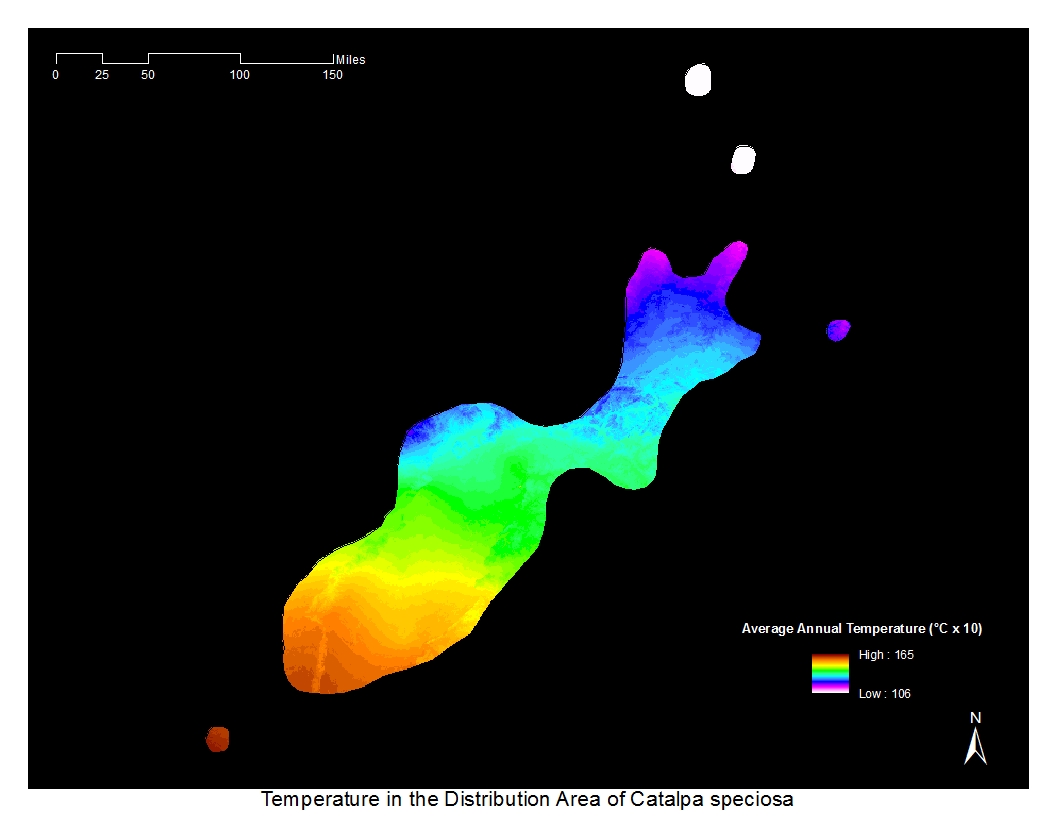The northern catalpa, Catalpa speciosa, is also known as the cigar tree, the Indian bean tree, the Catawba, the caterpillar tree, the hardy catalpa, and the western catalpa.
The catalpa is large and deciduous. The tree grows up to 60 feet tall with a crown width of 40 feet. Growth begins rapidly with 18 inches per year, but slows as the tree becomes older. Typically, the tree only lives about 50 years, making it very short-lived.
Typically, the tree does best with full sun or partial shade. The northern catalpa is very tolerant of soil type, withstanding wet or dry conditions as well as alkaline soils, though it does prefer deep, moist soils and does best on fertile soils.
The northern catalpa typically flowers after 7 years. Leaves are large, growing up to 12 inches in length and 4 to 8 inches wide. Seed pods of the northern catalpa appear bean-like. The pods are 8 to 20 inches long, and ¼ to ½ inch wide. The pods begin green, turning brown when ripe. The seeds inside are approximately an inch long.
The catalpa is the sole host of the catalpa sphinx moth. It also attracts hummingbirds and bees. On campus, the northern catalpa can be found north of South College.




